Serving 2,266 students in grades 9-12, Tift County High School ranks in the bottom 50% of all schools in Georgia for overall test scores (math proficiency is bottom 50%, and reading proficiency is bottom 50%).
The percentage of students achieving proficiency in math is 18% (which is lower than the Georgia state average of 37%). The percentage of students achieving proficiency in reading/language arts is 32% (which is lower than the Georgia state average of 40%).
The student:teacher ratio of 17:1 is higher than the Georgia state level of 14:1.
Minority enrollment is 61% of the student body (majority Black), which is lower than the Georgia state average of 65% (majority Black).
Quick Stats (2025)
- Grades: 9-12
- Enrollment: 2,266 students
- Student:Teacher Ratio: 17:1
- Minority Enrollment: 61%
- Graduation Rate: 93% (Top 30% in GA)
- Overall Testing Rank: Bottom 50%
- Math Proficiency: 18% (Btm 50%)
- Reading Proficiency: 32% (Btm 50%)
- Science Proficiency: 26% (Btm 50%)
- Source: National Center for Education Statistics (NCES), GA Dept. of Education
Top Rankings
Tift County High School ranks among the top 20% of public schools in Georgia for:
Category
Attribute
Diversity
Percent Eligible For Free Lunch
School Overview
Tift County High School's student population of 2,266 students has stayed relatively flat over five school years.
The teacher population of 131 teachers has stayed relatively flat over five school years.
Grades Offered
Grades 9-12
Total Students
2,266 students
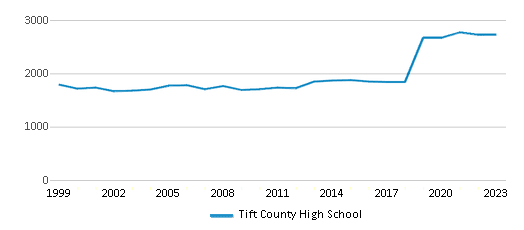
Gender %
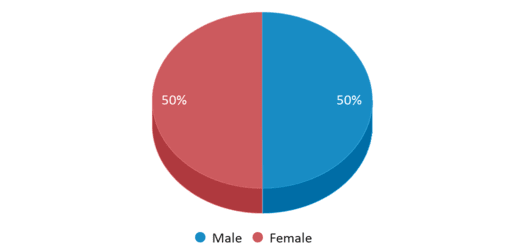
Total Classroom Teachers
131 teachers
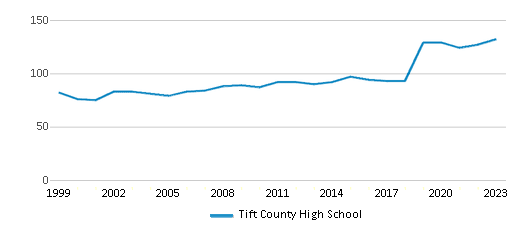
Students by Grade
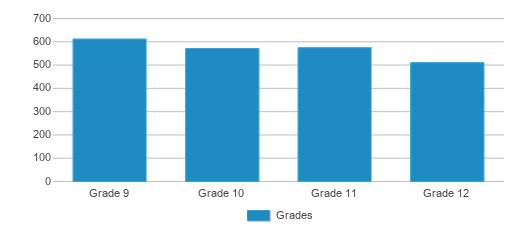
School Calendar
School Rankings
Tift County High School ranks within the bottom 50% of all 2,204 schools in Georgia (based off of combined math and reading proficiency testing data).
The diversity score of Tift County High School is 0.68, which is less than the diversity score at state average of 0.71. The school's diversity has stayed relatively flat over five school years.
Overall Testing Rank
#1497 out of 2204 schools
(Bottom 50%)
(Bottom 50%)
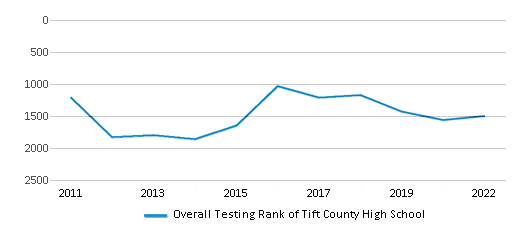
Math Test Scores (% Proficient)
18%
37%
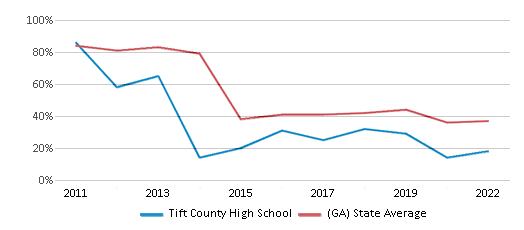
Reading/Language Arts Test Scores (% Proficient)
32%
40%
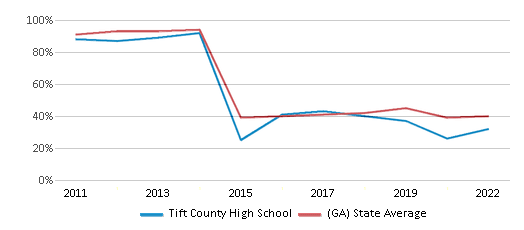
Science Test Scores (% Proficient)
26%
40%
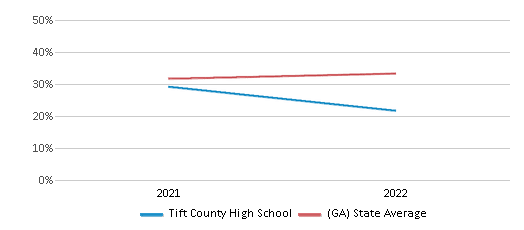
Student : Teacher Ratio
17:1
14:1
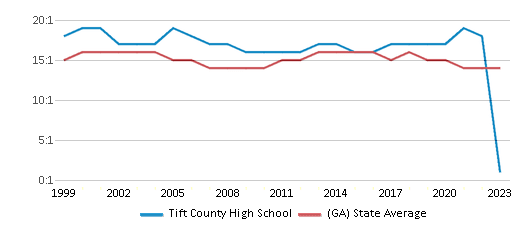
American Indian
n/a
n/a
Asian
2%
5%
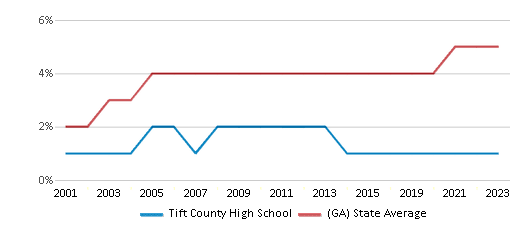
Hispanic
20%
19%
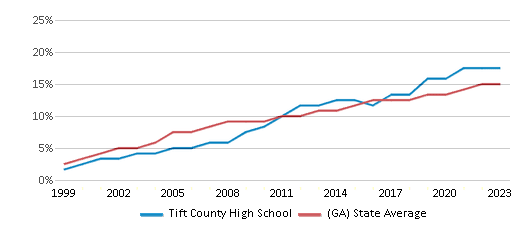
Black
36%
36%
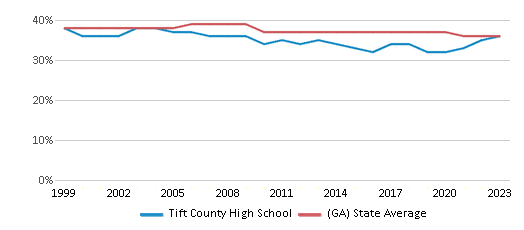
White
39%
35%
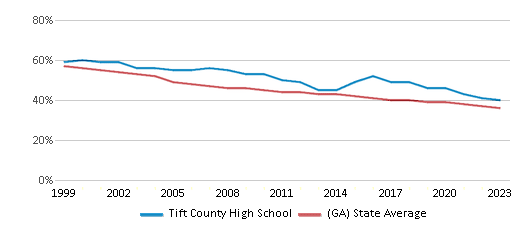
Hawaiian
n/a
n/a
Two or more races
3%
5%
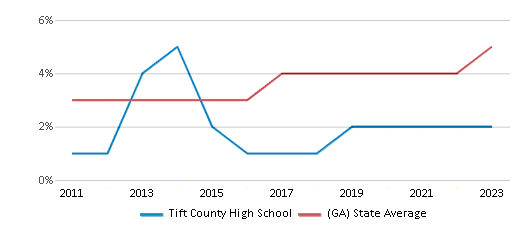
All Ethnic Groups
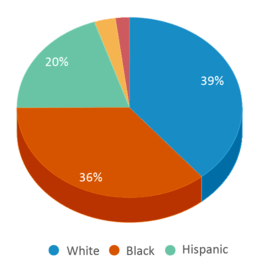
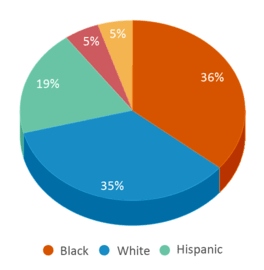
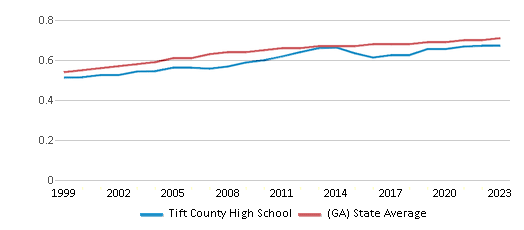
Graduation Rate
93%
84%
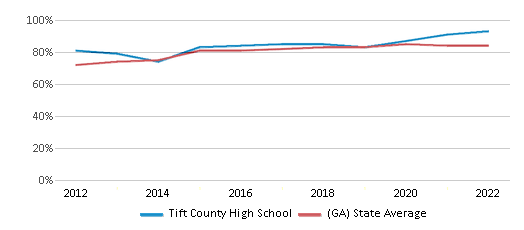
Participates in the National School Lunch Program (NSLP)
Yes
Eligible for Free Lunch
67%
59%
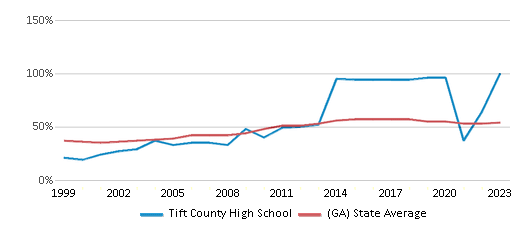
Eligible for Reduced Lunch (12-13)
6%
7%
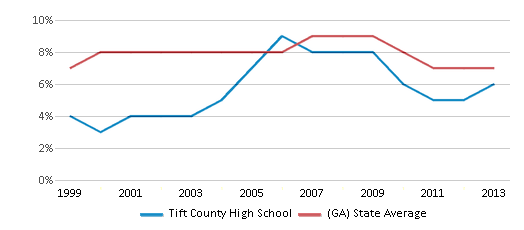
School Statewide Testing
School District Name
Source: National Center for Education Statistics (NCES), GA Dept. of Education
Profile last updated: 02/09/2025
Frequently Asked Questions
What is Tift County High School's ranking?
Tift County High School is ranked #1497 out of 2,204 schools, which ranks it among the bottom 50% of public schools in Georgia.
What percent of students have achieved state testing proficiency in math and reading?
18% of students have achieved math proficiency (compared to the 37% GA state average), while 32% of students have achieved reading proficiency (compared to the 40% GA state average).
What is the graduation rate of Tift County High School?
The graduation rate of Tift County High School is 93%, which is higher than the Georgia state average of 84%.
How many students attend Tift County High School?
2,266 students attend Tift County High School.
What is the racial composition of the student body?
39% of Tift County High School students are White, 36% of students are Black, 20% of students are Hispanic, 3% of students are Two or more races, and 2% of students are Asian.
What is the student:teacher ratio of Tift County High School?
Tift County High School has a student ration of 17:1, which is higher than the Georgia state average of 14:1.
What grades does Tift County High School offer ?
Tift County High School offers enrollment in grades 9-12
What school district is Tift County High School part of?
Tift County High School is part of Tift County School District.
School Reviews
5 4/6/2019
Is a great School !!
2 9/26/2007
The quality of the academic programs at Tift County High School are for the most part on the same level as the surrounding area schools. There are programs in the Fine Arts available and but a limited amout of other activities mainly sports related. Athletic awards seem to take top priority or they overshadow academic awards. The facility is fairly new and in good condition. The level of parental involvement is average however, the new administration does not seem to care about high school students and is biased and unfair. The new administration regularly insults students but appears to other admin and some faculty to be caring but is lacking in empathy and does not have the skills needed to access certain situations. I would only recommend this school considering the present administration if you have no other choice. There is nothing that stands out in any other area that would be a fair trade for the inadequate adminisrtation.
Review Tift County High School. Reviews should be a few sentences in length. Please include any comments on:
- Quality of academic programs, teachers, and facilities
- Availability of music, art, sports and other extracurricular activities
Recent Articles

What Is A Charter School?
Explore the world of charter schools in this comprehensive guide. Learn about their history, how they operate, and the pros and cons of this educational innovation. Discover key facts about charter schools, including admission policies, demographics, and funding, as well as what to look for when considering a charter school for your child.

10 Reasons Why High School Sports Benefit Students
Discover the 10 compelling reasons why high school sports are beneficial for students. This comprehensive article explores how athletics enhance academic performance, foster personal growth, and develop crucial life skills. From improved fitness and time management to leadership development and community representation, learn why participating in high school sports can be a game-changer for students' overall success and well-being.

February 05, 2025
Understanding the U.S. Department of Education: Structure, Impact, and EvolutionWe explore how the Department of Education shapes American education, from its cabinet-level leadership to its impact on millions of students, written for general audiences seeking clarity on this vital institution.









